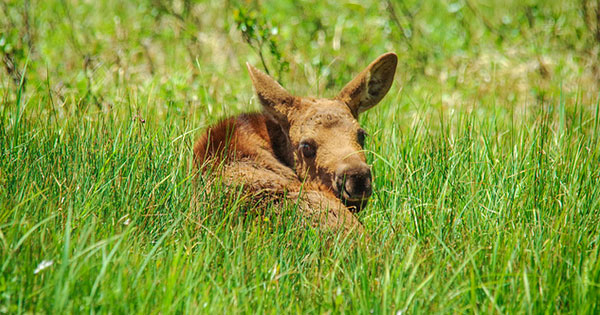
I haven’t seen any of this year’s moose babies, but last week, at the bar, a friend told me that one had just wandered through her yard. She lives on a few acres about 10 minutes from town, on a property ringed with wild blueberries. She and her four-year-old son were at the window when the moose calf walked up the driveway.
At about a month old, a moose calf looks like an animal out of one of those mix-and-match children’s books: head of a jackrabbit, legs of a caramel-colored giraffe. The calves would seem an accident of biology if we didn’t keep spying them year after year, being born in back yards, strolling through the neighborhood at their wary mothers’ sides. Their new coats catch the sunlight and glow gold.
This year’s calves are still with their mothers and will be until their mothers aggressively chase them off, when ready to give birth again in a year. Which is why each spring, we are all wary of the teenage moose that have been sent away by their mothers and are particularly surly. But the calf on my friend’s property was young and alone. And then, a moment after it appeared, a black bear lunged by at the edge of the yard.
What to do? The human impulse is to protect the calf and scare off the bear, which would relish this tender meal. But to what purpose? At this young age, the animal would still be nursing as well as eating shrubs and greens. So perhaps the calf’s mother is gone or dead. The calf wouldn’t last long among the bears and the occasional wolf. My friend called the state fish and game department and got the answer she was expecting. Do nothing, she was told.
Which brought my friend and me, as we shouted at each other from a foot away over the crescendoing music in the bar, to the topic of guns. Neither of us keeps a firearm in the house. Regardless, she could have done little to keep the bear at bay. It probably killed the calf somewhere out of sight.
This was days before the horrific event in Florida. And as I think now about the fate of the baby moose, I can empathize with the underdog, while knowing that even in death, it will not have gone to waste.


